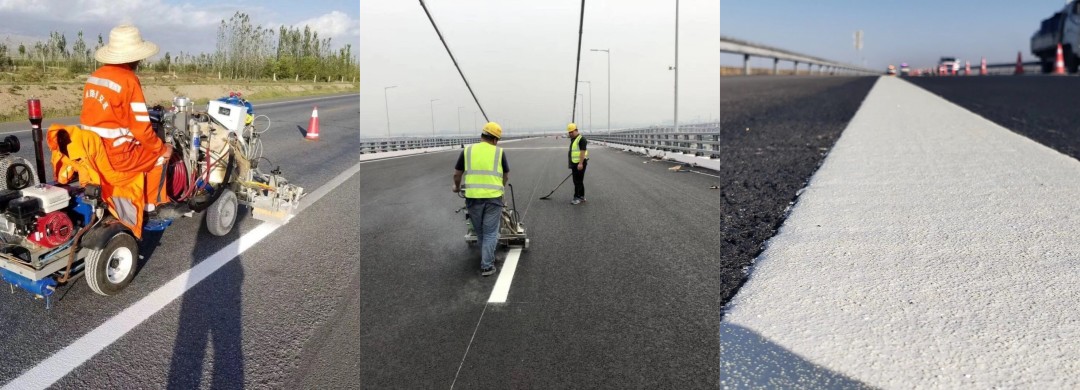How to Solve Bubbles in Road Markings?
How to Solve Bubbles in Road Markings?

All roads should be clean and dry during the marking construction. Moisture is the most harmful factor in the adhesion of paint and pavement. The amount of moisture in the ground is enough to affect proper coating adhesion. Early morning dew and fog usually result in wet roads. If there is too much moisture on the road surface, it usually leads to blistering of the hot melt markings. Blisters will form as surface bubbles and may not burst. If this happens, the marking construction should be stopped until the road surface is dry. The only way to determine the presence of moisture is to perform a test. There are many ways to test for moisture:
1. Place a 30cm square thin plexiglass plate (aluminum foil, etc.) on the road with tape, and seal the surrounding edges with tape. After 15 minutes, check the bottom of the board and the road surface. If the moisture is too much, do not hot melt marking construction.
2. Place a 45cm square tar paper on the road surface and coat it with hot melt paint heated to 215 degrees Celsius. Wait two minutes and pick up the tar paper. Check the underside. If there is moisture, do not hot melt construction.
The ultimate purpose of installing and maintaining road markings is to improve road safety; for this, high-quality raw traffic safety materials are essential.
As a leading manufacturer of traffic safety materials with more than 30 years’ experience, Tory is committed to ongoing product development and excellent customer services that makes us the perfect partner for your road marking paint supply needs. We can provide you with raw materials (such as reflective glass beads, MMA resin, AW element etc.) with very competitive prices which can be customized to meet the specific requirements of customers and projects. For more information, or to get started on your traffic safety solution: https://www.cntory.com/
Feel free to contact us:
Email: Echo@cntory.com
WhatsAPP: +8617355287086
Prev: Why Two-Component Marking Paints Are More Suitable for Heavy Traffic Sections?